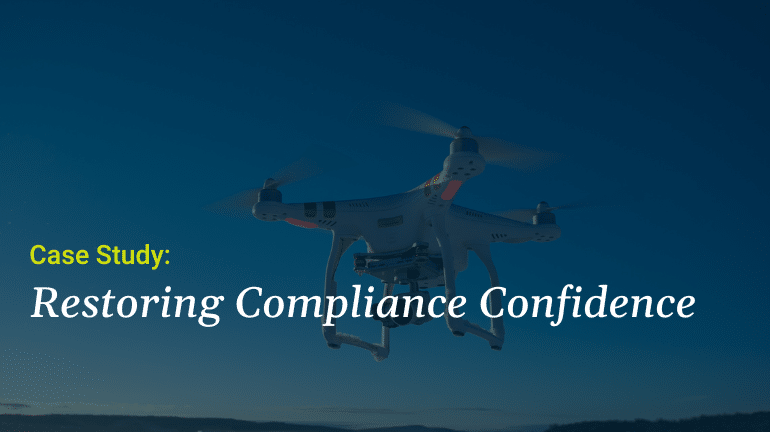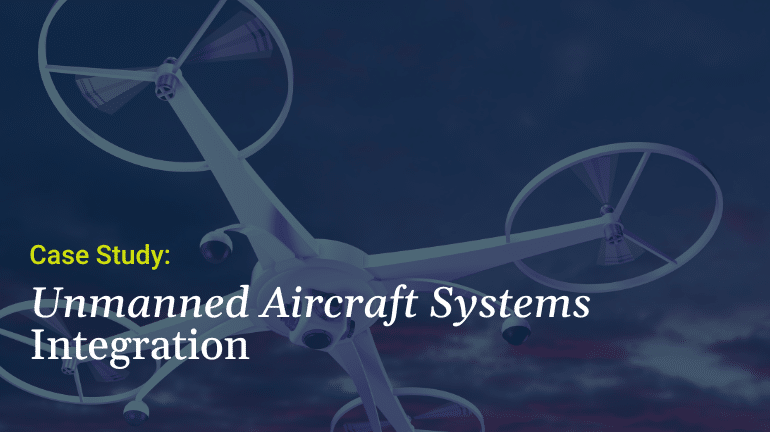FAA Evaluation Modernization Delivers 30% Faster Rollouts and Long-Term Mission Readiness
Evans Embedded a Standardized Testing Capability to Cut Delays, Reduce Risk, and Scale Evaluation Across the National Airspace

Background
The Federal Aviation Administration (FAA) oversees one of the most complex and safety-critical air traffic systems in the world. Ensuring this system remains modern, resilient, and safe requires rigorous, repeatable evaluation protocols for every system enhancement.

The Challenge
Legacy evaluation procedures were fragmented. Different teams followed different processes. Feedback loops were inconsistent. Technical documentation lacked traceability. These inefficiencies introduced costly delays, reduced test accuracy, and increased operational uncertainty.
Without a standardized evaluation model, the FAA risked slowed modernization, system misalignment, and degraded performance across the National Airspace System (NAS). Timely deployment of safety-critical enhancements was becoming harder to guarantee.
Frontline testers, engineers, and operators were often working without clear guidelines. Test teams duplicated efforts. Decision-making lagged. And team coordination suffered across organizational lines — all draining time, morale, and resources.

The Approach
Evans applied Lean Six Sigma to install a repeatable, scalable evaluation capability tailored to federal mission operations.
Key Implementation Highlights:
- Established User-Centered Requirements Framework: Aligned early-stage system requirements with operational end-user needs, creating a foundation that bridges technical capabilities with practical field application and ensures solutions address authentic challenges.
- Developed Efficient Test Architectures: Created clear, traceable processes that established direct connections between specifications and test cases, providing a systematic knowledge structure that minimized risk of re-work pre-deployment.
- Implemented Standardized Evaluation System: Designed consistent evaluation protocols that enable uniform execution across diverse teams, transforming subjective assessments into structured frameworks that deliver reliable, comparable results.
- Engineered Optimized Interface Solutions: Applied factors engineering principles to enhance interface usability and reduce operator workload, creating systems that balance technical sophistication with operational practicality.
- Created Accelerated Decision Framework: Established cross-functional decision protocols that streamline test disposition and eliminate rework cycles, converting potential delays into structured resolution pathways.
Evans delivered this transformation by embedding alongside operational, technical, and training stakeholders — aligning priorities through structured frameworks, removing process friction, and establishing a unified source of truth across all functions.

The Results
- 30% Reduction in Evaluation Time: Testing and deployment cycles were streamlined with standardized protocols and cross-functional alignment.
- 15% Boost in Product Quality: Test feedback loops directly informed system refinement, increasing confidence in each new release.
- 15% Improvement in Scheduling Efficiency: Improved visibility and resource planning cut down on misalignment and delays.
- Operational Cost Savings: Reduced rework, clearer documentation, and better coordination led to measurable cost efficiency across test cycles.
- 100% Training Completion: Every targeted team member completed new training—cementing long-term sustainability of the evaluation model.

The Tradeoff of Not Acting
Without Evans, the FAA would still be facing:
- Deployment delays risking national airspace reliability
- Higher labor costs from duplicative testing and unclear ownership
- Fragmented stakeholder coordination and communication gaps
- Continued operator burden due to complex interface workflows and undocumented evaluation steps
- Reduced capacity to scale future enhancements with confidence
Evans installed a system that’s standardized, streamlined, and scalable — built for the complexity and scale of the national aviation mission.





